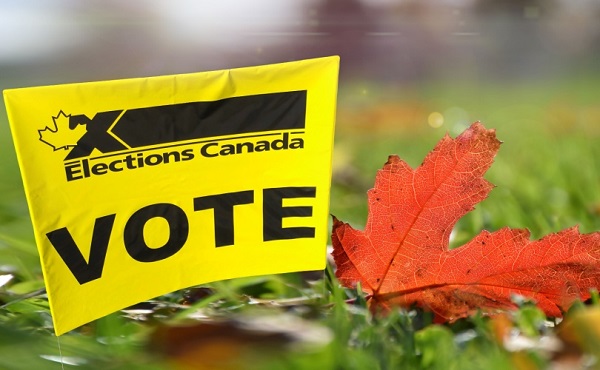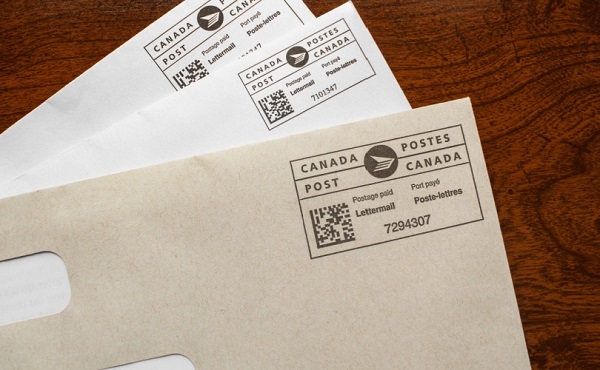National
Liberals, NDP admit closed-door meetings took place in attempt to delay Canada’s next election

From LifeSiteNews
Pushing back the date would preserve the pensions of some of the MPs who could be voted out of office in October 2025.
Aides to the cabinet of Prime Minister Justin Trudeau confirmed that MPs from the Liberal and New Democratic Party (NDP) did indeed hold closed-door “briefings” to rewrite Canada’s elections laws so that they could push back the date of the next election.
The closed-door talks between the NDP and Liberals confirmed the aides included a revision that would guarantee some of its 28 MPs, including three of Trudeau’s cabinet members, would get a pension.
Allen Sutherland, who serves as the assistant cabinet secretary, testified before the House of Commons affairs committee that the changes to the Elections Act were discussed in the meetings.
“We attended a meeting where the substance of that proposal was discussed,” he said, adding that his “understanding is the briefing was primarily oral.”
According to Sutherland, as reported by Blacklock’s Reporter, it was only NDP and Liberal MPs who attended the secret meetings regarding changes to Canada’s Elections Act via Bill C-65, An Act to Amend the Canada Elections Act before the bill was introduced in March.
As reported by LifeSiteNews before, the Liberals were hoping to delay the 2025 federal election by a few days in what many see as a stunt to secure pensions for MPs who are projected to lose their seats. Approximately 80 MPs would qualify for pensions should they sit as MPs until at least October 27, 2025, which is the newly proposed election date. The election date is currently set for October 20, 2025.
Sutherland noted when asked by Conservative MP Luc Berthold that he recalled little from the meetings, but he did confirm he attended “two meetings of that kind.”
“Didn’t you find it unusual that a discussion about amending the Elections Act included only two political parties and excluded the others?” Berthold asked.
Sutherland responded, “It’s important to understand what my role was in those meetings which was simply to provide background information.”
Berthold then asked, “You nevertheless suggested amendments to the legislation including a change of dates?”
“My role was to provide information,” replied Sutherland, who added he could not provide the exact dates of the meetings.
MPs must serve at least six years to qualify for a pension that pays $77,900 a year. Should an election be called today, many MPs would fall short of reaching the six years, hence Bill C-65 was introduced by the Liberals and NDP.
The Liberals have claimed that pushing back the next election date is not over pensions but due to “trying to observe religious holidays,” as noted by Liberal MP Mark Gerretsen.
“Conservatives voted against this bill,” Berthold said, as they are “confident of winning re-election. We don’t need this change.”
Trudeau’s popularity is at a all-time low, but he has refused to step down as PM, call an early election, or even step aside as Liberal Party leader.
As for the amendments to elections laws, they come after months of polling in favour of the Conservative Party under the leadership of Pierre Poilievre.
A recent poll found that 70 percent of Canadians believe the country is “broken” as Trudeau focuses on less critical issues. Similarly, in January, most Canadians reported that they are worse off financially since Trudeau took office.
Additionally, a January poll showed that 46 percent of Canadians expressed a desire for the federal election to take place sooner rather than the latest mandated date in the fall of 2025.
Immigration
Mass immigration can cause enormous shifts in local culture, national identity, and community cohesion

By Geoff Russ for Inside Policy
It matters where immigrants come from, why they choose Canada, and how many are arriving from any single country. When it comes to countries of origin, immigration streams into Canada have become wildly unbalanced over the last decade.
Few topics have animated Canadians more than immigration in the past year.
There is broad consensus among the public that the annual intake of newcomers must fall, and polling shows both native-born and immigrant citizens agree on this. In Ottawa, the Conservative opposition has called for lower numbers, and the Liberal government ostensibly concurs.
While much of the discussion surrounding immigration has focused on economic factors like affordability and the shrinking housing supply, less attention has been paid to the cultural and political changes of welcoming more than 5 million people into the country since 2014.
Specifically, attention must be paid to the possible outcomes of importing hundreds of thousands of people from regions embroiled by war or prone to conflict. This is a necessity as digital technology proliferates and guarantees the world will be interconnected, but not united.
Mass immigration brings in far more than just people. It can cause enormous shifts in local culture, national identity, political allegiances, and community cohesion.
It matters where immigrants come from, why they choose Canada, and how many are arriving from any single country. When it comes to countries of origin, immigration streams into Canada have become wildly unbalanced over the last decade.
In 2023, almost 140,000 people immigrated to Canada from India, while the second-largest intake came from China, with 31,770 people.
This new trend is at odds with Canada’s historical immigration policies, which were more evenly weighted by country. In 2010, the top three national pools of immigration were the Philippines at 38,300 newcomers, India with 33,500, and China with 31,800.
Other countries that Canada has received increasing numbers of migrants from includes Syria, Pakistan, and Nigeria.
Past federal governments took consideration for details like economic needs and capacity for integration. Canadian immigration policy in 2025 should take into account modern communications and conflicts within certain regions as well.
21st century technology continues to advance and innovate at dizzying speeds, giving rise to immersive social platforms and instant messaging platforms like WhatsApp or Signal. This has brought the world closer together, but rather than promoting peace and understanding, it has amplified foreign conflicts and brought them to our own backyards.
Tens of thousands of migrants from the Levant have arrived since 2015, a region where anti-Zionism is deeply ingrained in the cultures, as well as full-blown antisemitism.
Since the outbreak of the Israel-Hamas War in 2023, the entire West has borne witness to antisemitic violence in Europe and North America, often perpetrated by ideologically motivated migrants.
Earlier this year, a Syrian migrant in Germany went on a stabbing spree with the intent of murdering Jews, while last September, Canadian police foiled the plot of a Pakistani man in Ontario who had planned to commit a mass killing of Jews in New York City.
Canada’s political culture has been profoundly affected by these same waves, with demographic changes forcing the federal government to alter its longstanding foreign policy positions. For example, the newly-minted Minister of Industry Mélanie Joly allegedly remarked last year that her shifting stance on the Israel-Hamas war was due to the “demographics” of her Montreal riding.
Montreal itself has become a hotbed of anti-Israeli and anti-semitic violence. Riots, property damage, and the storming of the McGill University campus have been carried out by radicals inspired by Hamas and their allies.
In 1968, the great Canadian thinker Marshall McLuhan co-authored War and Peace in the Global Village, which warned of the consequences of modern technologies erasing the boundaries of the world. McLuhan explicitly cautioned that technology would make the world smaller, and lead to conflict in his theorized global village.
Today, that village is one where Jewish students are routinely harassed on college campuses in Vancouver and Toronto, while synagogues are burnt to the ground in Melbourne. It does not matter whether the victims are Israeli or not. They are seen by their assailants as legitimate targets as part of an enemy tribe.
On May 21, two staffers at the Israeli embassy in Washington DC were shot dead by a man shouting pro-Palestinian slogans.
These sorts of imported feuds go beyond the Middle East. Global tensions in regions like the Indian subcontinent present another threat of foreign-inspired and funded violence, as well as undue political shifts.
India and Pakistan are locked in a long running standoff over the disputed territory of Kashmir.
Last month, several tourists were murdered in Kashmir by militants that India accused Pakistan of backing, leading to several low-level exchanges between the Indian and Pakistani militaries before a ceasefire was brokered. Tensions are far from dissipated, and the possibility of a full-scale confrontation between India and Pakistan remains high.
Considering those two rivals have massive diasporas in the West, a potential war on the subcontinent could radically change domestic politics in countries in Canada, Australia, and Britain.
In 2022, violent clashes broke out between Hindu and Muslim youths in the British city of Leicester following a cricket match between India and Pakistan. The street battles lasted for weeks, and threatened to restart later that year following an escalation in India and Pakistan’s clash over Kashmir. In London, demonstrators from the Pakistani and Indian communities came close to violence.
If a sporting rivalry can inspire hooliganism, a war will spark something far worse, and the globalization of the Israel-Gaza conflict is a glimpse into what that might look like.
There is historical precedent in Canada for how overseas conflicts affect domestic politics.
During the 19th century, hundreds of thousands of Irish—both Catholic and Protestant—emigrated to Canada before and after Confederation in 1867. They brought their religious feuds with them.
The militantly anti-Catholic Orange Order, run by Protestants, became one of the most powerful political forces in Ontario. They held a virtual monopoly on municipal politics in Toronto, excluded Catholics from jobs in the public service, and took part in brawls with the city’s Irish Catholic community for more than 100 years.
Thomas D’Arcy McGee, one of the Fathers of Confederation and an Irish Catholic migrant, was murdered for speaking out against the republican Fenian Brotherhood, which had infiltrated politics both in Canada and the United States.
Integration throughout successive generations mitigates and even practically eliminates the impact of imported conflicts. This was the case with the Irish sectarian divide, though it took over a century to fade away.
Worth noting is that roughly 300,000 Ukrainian refugees currently reside in Canada, having been admitted under a special visa program following the Russian invasion in 2022. It is intended to be temporary, with the expectation of repatriation once a stable peace returns to Ukraine.
Similarly to Irish-Canadians, the vast majority of the established Ukrainian-Canadian community has its roots in pre-modern Canada, and is largely well-integrated into the country’s social fabric. To date, there has been no major violence or anti-social harms inflicted upon their Russian-Canadian counterparts despite the war, or vice-versa.
Furthermore, the Canadian government has a longstanding close relationship with Kyiv, and there is far more trust and transparency regarding intent and collaboration. This is not the case with governments like China and India, the former of whom actively interferes in our elections, and the latter of which has been accused of assassinating dissidents on Canadian soil.
The existence of the iPhone, the internet, and opportunistic foreign governments makes it incredibly dangerous to not change course. That is not to imply that the average migrant is an active foreign agent. But the sheer quantity makes vetting them all a challenge.
Mitigating these threats requires strategic planning when crafting immigration policy.
Other parts of the world like Southeast Asia, Southern Europe, and Latin America are relatively stable and peaceful and are potential sources of newcomers with far lower risk of foreign interference and diasporic violence.
At-play is the stability, unity, and integrity of our political system. Canadian politics must remain fully Canadian in its focus and priorities. That cannot happen if we sleepwalk into becoming a battleground for the rest of the world.
Geoff Russ is a writer and policy analyst, and a contributor for the Macdonald-Laurier Institute.
Censorship Industrial Complex
Alberta senator wants to revive lapsed Trudeau internet censorship bill

From LifeSiteNews
Senator Kristopher Wells and other senators are ‘interested’ in reviving the controversial Online Harms Act legislation that was abandoned after the election call.
A recent Trudeau-appointed Canadian senator said that he and other “interested senators” want the current Liberal government of Prime Minister Mark Carney to revive a controversial Trudeau-era internet censorship bill that lapsed.
Kristopher Wells, appointed by former Prime Minister Justin Trudeau last year as a senator from Alberta, made the comments about reviving an internet censorship bill recently in the Senate.
“In the last Parliament, the government proposed important changes to the Criminal Code of Canada designed to strengthen penalties for hate crime offences,” he said of Bill C-63 that lapsed earlier this year after the federal election was called.
Bill C-63, or the Online Harms Act, was put forth under the guise of protecting children from exploitation online.
While protecting children is indeed a duty of the state, the bill included several measures that targeted vaguely defined “hate speech” infractions involving race, gender, and religion, among other categories. The proposal was thus blasted by many legal experts.
The Online Harms Act would have in essence censored legal internet content that the government thought “likely to foment detestation or vilification of an individual or group.” It would be up to the Canadian Human Rights Commission to investigate complaints.
Wells said that “Bill C-63 did not come to a vote in the other place and in the dying days of the last Parliament the government signaled it would be prioritizing other aspects of the bill.”
“I believe Canada must get tougher on hate and send a clear and unequivocal message that hate and extremism will never be tolerated in this country no matter who it targets,” he said.
Carney, as reported by LifeSiteNews, vowed to continue in Trudeau’s footsteps, promising even more legislation to crack down on lawful internet content.
Before the April 28 election call, the Liberals were pushing Bill C-63.
Wells asked if the current Carney government remains “committed to tabling legislation that will amend the Criminal Code as proposed in the previous Bill C-63 and will it commit to working with interested senators and community stakeholders to make the changes needed to ensure this important legislation is passed?”
Seasoned Senator Marc Gold replied that he is not in “a position to speculate” on whether a new bill would be brought forward.
Before Bill C-63, a similar law, Bill C-36, lapsed in 2021 due to that year’s general election.
As noted by LifeSiteNews, Wells has in the past advocated for closing Christian schools that refuse to violate their religious principles by accepting so-called Gay-Straight Alliance Clubs and spearheaded so-called “conversion therapy bans.”
Other internet censorship bills that have become law have yet to be fully implemented.
Last month, LifeSiteNews reported that former Minister of Environment Steven Guilbeault, known for his radical climate views, will be the person in charge of implementing Bill C-11, a controversial bill passed in 2023 that aims to censor legal internet content in Canada.
-

 Crime21 hours ago
Crime21 hours agoHow Chinese State-Linked Networks Replaced the Medellín Model with Global Logistics and Political Protection
-

 Addictions22 hours ago
Addictions22 hours agoNew RCMP program steering opioid addicted towards treatment and recovery
-

 Aristotle Foundation23 hours ago
Aristotle Foundation23 hours agoWe need an immigration policy that will serve all Canadians
-

 Business20 hours ago
Business20 hours agoNatural gas pipeline ownership spreads across 36 First Nations in B.C.
-

 Courageous Discourse18 hours ago
Courageous Discourse18 hours agoHealthcare Blockbuster – RFK Jr removes all 17 members of CDC Vaccine Advisory Panel!
-

 Health14 hours ago
Health14 hours agoRFK Jr. purges CDC vaccine panel, citing decades of ‘skewed science’
-

 Censorship Industrial Complex17 hours ago
Censorship Industrial Complex17 hours agoAlberta senator wants to revive lapsed Trudeau internet censorship bill
-

 Censorship Industrial Complex19 hours ago
Censorship Industrial Complex19 hours agoConservatives slam Liberal bill to allow police to search through Canadians’ mail



